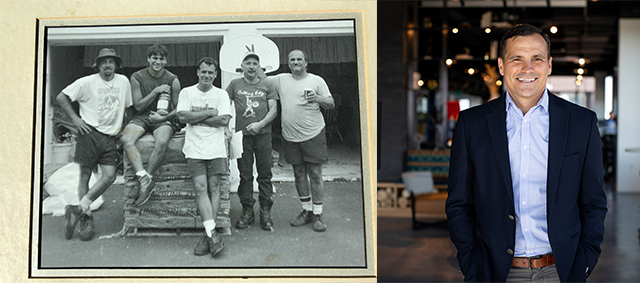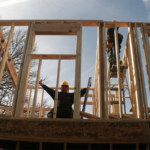
Dan DiClerico, an experienced speaker and thought leader in the real estate, remodeling and home product space, shares the lessons his work as a roofer has taught him.
A couple weeks back, I took part in a This Old House livestream with show host Kevin O’Connor and general contractor Tom Silva, talking about the skilled labor shortage in the U.S. I used to work at TOH, so it was a blast being back with the crew, up in Cape Ann, MA., scene of the season 41 project house.
But the experience had extra special meaning, since my story begins in the trades—specifically the roofing trade, which I worked in during summers back in college. As I said on the broadcast, I was a roofer and an English major, which is how I ended up writing about home improvement, first at TOH, then at various other media brands, before coming to HomeAdvisor in 2017.
I also talked about how the education I got on the roof was every bit as valuable as the one I received in the classroom. That’s one reason I’d be happy to see my kids (son or daughter) end up in the trades. That and the fact that the career path is steady, secure, and well-paying; young people with the right entrepreneurial spirit even stand to make a fortune.
Back to my rooftop education, though, I’ve been reflecting on just how much the experience taught me. I truly believe that, as far as my work life is concerned, all I really needed to know I learned on the roof. Here are the key lessons.
It’s about productivity, not hard work
Don’t get me wrong — roofing is the hardest I’ve worked in my life. But at the end of the day, what mattered most wasn’t how hard the crew toiled, but how much we got done. As my boss liked to say, “work smarter boys, not harder.” Any efficiencies we could bring to the process, even something as simple as making sure the lead technicians always had a fresh bundle of shingles in front of them, would lead to faster completions, more projects, and bigger paychecks.
There’s no growth without innovation
When I first joined the crew, we were still using hammers and nails (this was quite a few moons ago, remember). But a couple years in, my boss made the investment in pneumatic nailers. Between the guns, hoses, and compressor, it must have set him back a few thousand dollars. But productivity doubled, or even tripled, so the investment quickly paid for itself. It was a good lesson in the importance of innovation to long-term growth.
Paying dues is about learning the process
My first summer with the crew, I rarely made it up on the roof. My job was to clean up the old shingles on the ground below. Eventually I joined in on the tear off, shingle eater in hand, then I took on tasks like snapping chalk lines and tacking down the black felt underlayment.
It was many projects before I was handed a nail gun and given the responsibility of laying actual shingles. I remember feeling frustrated at times by this, but looking back, I realize that the apprenticeship process was the only way to properly learn the trade. The same goes for any line of work.
There’s no room for ego on the roof
Maybe it’s the risk factor that comes with working two and three stories in the air. If the guy footing the ladder below loses focus, it could end very, very badly. The trades also taught me about humility. There were times when my boss would take on menial tasks, sweeping up or grabbing a shingle eater to help with the tear off.
Conversely, I had to push outside my comfort zones on occasion for the good of the crew. I’ll never forget having to drive the manual-ride, two-ton pickup truck, packed to the gills with scrap metal, to the transfer station, because the regular driver was out. It wasn’t pretty, but I white-knuckled it through, allowing the rest of the crew to finish the job and move on to the next. In short, you do what you got to do to get the job done.
Water is enemy number one for any homeowner
My time in the trades also taught me a lot about home maintenance, starting with the fact that water is the biggest threat to any house. I saw all the ways it can wreak havoc—for example, the corroded gutter that was sending water to the foundation walls below, causing extensive structural damage. Or the rotted roof rafters that were the result of a poorly flashed chimney.
Now that I’m a homeowner myself, I’m on the constant lookout for signs of water in and around the house. And thanks to my time in the trades, I’m usually ready with a solution.
*HomeAdvisor Pro is now Angi Leads.
Stay Up to Date on Trends
Get the latest marketing & business tips in your inbox.










